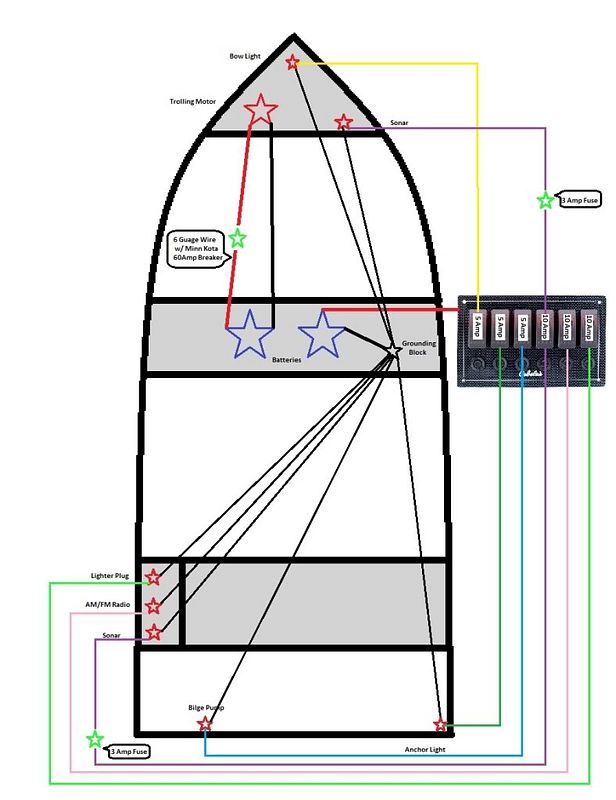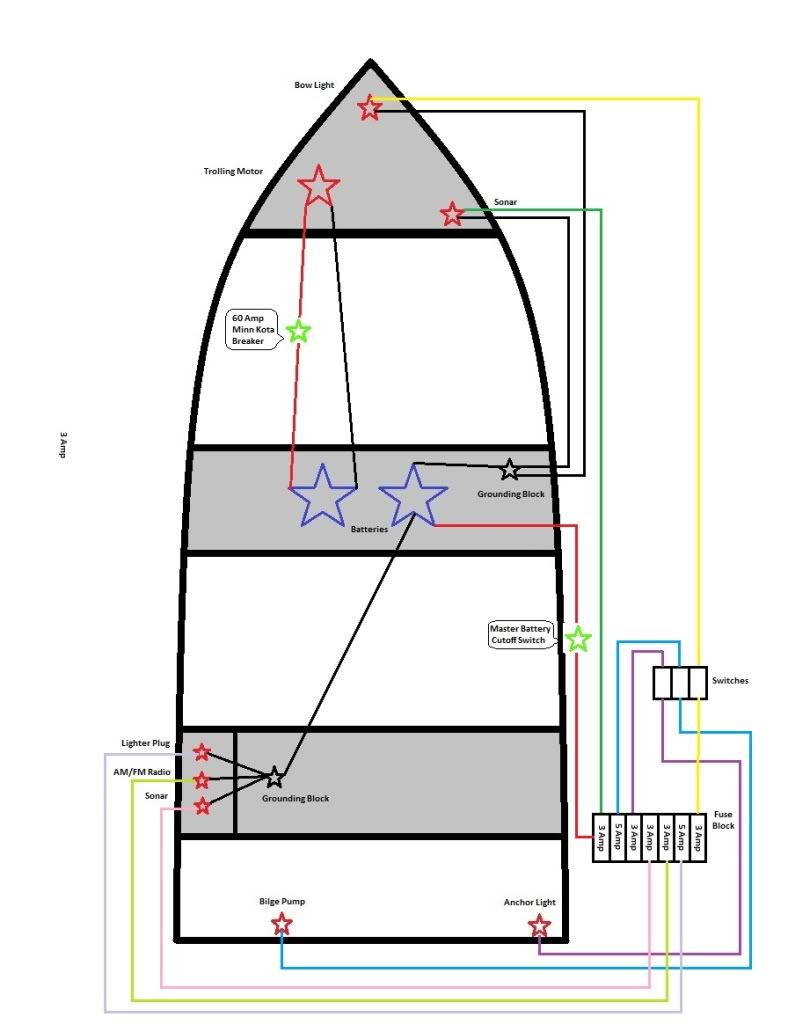Rick James
Well-known member
I'm fairly new to this type of stuff..........but did a fair amount of research and came up with the following diagram for my boat. I'm hoping someone that knows their stuff can look at this and tell me if I'm on the right track before I start buying stuff to complete the wiring.
A few things:
- Gas motor is pull start only, so I'm using a pair of identical batteries simply for redundancy. I fish a lot of rivers with dams and lock systems that are only a few miles apart, so if my gas motor doesn't start I NEED enough juice to the electric motor to get to shore quickly. :idea:
- Trolling Motor is going to be run to the battery with 6 gauge wire. Will include the 60 amp fuse outlined in the diagram
- Planning on 18 gauge wire for between the switch/fuse panel and each item on the diagram
- Will include 3 amp fuses between each actual sonar unit and the switch/fuse just in case
A few questions:
- Do most marine switch/breaker panels like the Cabela's one in the diagram include some type of grounding block inside? Will I need to buy this seperately? Do you guys just run to the battery? What's the "correct" way to do this?
- Should I plan on additional fuses between the switch/breaker panel and the other devices?
- Should I use the 18 gauge wire for between the accessory battery and the switch breaker panel?
- Any issues you see with this that I'm overlooking?

A few things:
- Gas motor is pull start only, so I'm using a pair of identical batteries simply for redundancy. I fish a lot of rivers with dams and lock systems that are only a few miles apart, so if my gas motor doesn't start I NEED enough juice to the electric motor to get to shore quickly. :idea:
- Trolling Motor is going to be run to the battery with 6 gauge wire. Will include the 60 amp fuse outlined in the diagram
- Planning on 18 gauge wire for between the switch/fuse panel and each item on the diagram
- Will include 3 amp fuses between each actual sonar unit and the switch/fuse just in case
A few questions:
- Do most marine switch/breaker panels like the Cabela's one in the diagram include some type of grounding block inside? Will I need to buy this seperately? Do you guys just run to the battery? What's the "correct" way to do this?
- Should I plan on additional fuses between the switch/breaker panel and the other devices?
- Should I use the 18 gauge wire for between the accessory battery and the switch breaker panel?
- Any issues you see with this that I'm overlooking?



